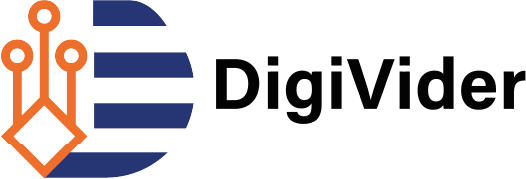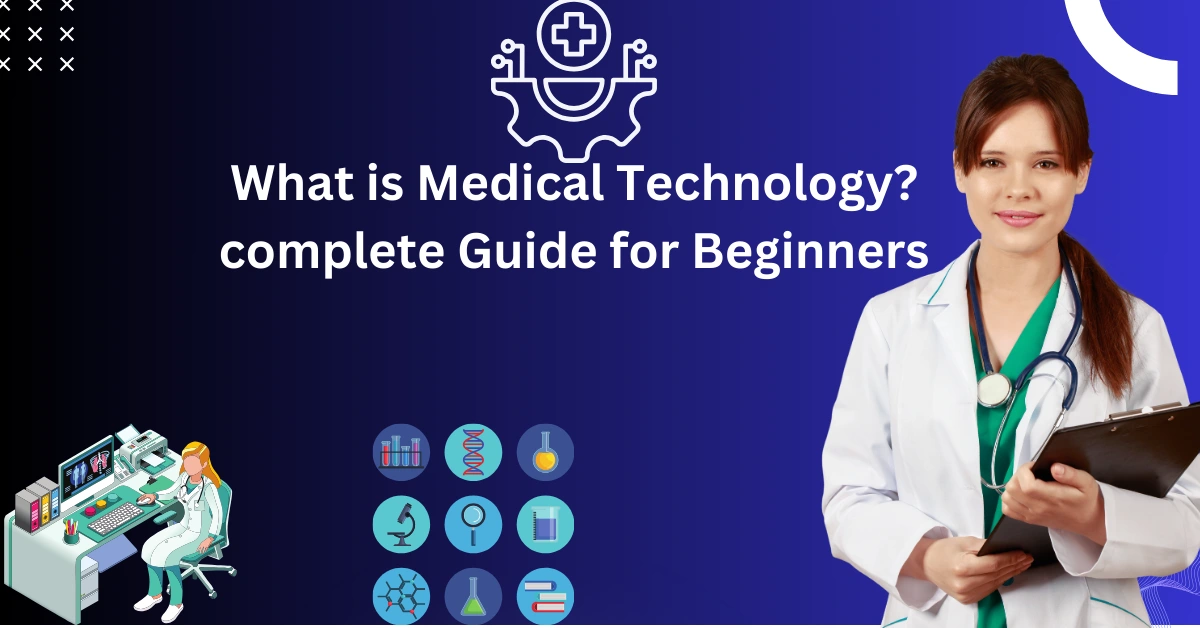Medical technology, often referred to as ManTech, encompasses a broad range of innovative tools, devices, and techniques designed to enhance healthcare delivery, diagnosis, treatment, and patient outcomes. Educational technology, or EdTech, refers to the application of digital tools, resources, and innovative methods to enhance teaching and learning. This guide for beginners will delve into the fascinating world of medical technology, exploring its fundamental concepts, key advancements. Medical technology encompasses the use of advanced tools and devices in healthcare to enhance patient care. For beginners, it involves a wide range of applications, from diagnostic equipment like MRI machines to electronic health records and telemedicine.
What is Medical Technology?
In order to build instruments, devices, equipment, and software solutions that are utilized in the diagnosis, treatment, monitoring, and management of medical diseases, scientific and engineering principles are applied. This is known as medical technology. It includes a wide range of innovations meant to raise patient care, lower healthcare costs, and improve the quality of healthcare services.
In order to improve patient outcomes, boost the effectiveness of healthcare delivery, and deepen our understanding of a range of medical disorders, medical technology acts as a link between the medical and engineering fields.
Historical Overview
Medical technology has its origins in the ancient societies that employed simple instruments and methods for healing. For example, historical accounts of ancient Egypt, Greece, and China mention the usage of medicines, surgical instruments, and simple diagnostic techniques.
However, with notable developments in medical equipment and diagnostic tools in the late 19th and early 20th centuries, the modern era of medical technology got underway. Important turning points include Wilhelm Conrad Roentgen’s invention of the X-ray in 1895, Willem Einthoven’s development of the first electrocardiogram (ECG) in 1903, and the development of the first insulin pump in the 1960s.
Medical technology had a boom of invention in the late 20th and early 21st centuries, fueled by developments in electronics, materials science, and information technology. As a result, advanced medical imaging techniques, sophisticated medical equipment, and the widespread use of electronic health data have all been made possible.
Types of Medical Technology

Medical technology comes in a variety of forms, each with a particular function inside the healthcare system. These categories comprise biotechnology, assistive technology, health information technology, therapeutic technology, and diagnostic technology.
Diagnostic Technology
Diagnostic technology plays a crucial role in the early detection and accurate diagnosis of medical conditions. It includes a wide range of tools and techniques, such as:
Medical Imaging:
The diagnosis of ailments ranging from fractures to cancer is made easier by technologies such as computed tomography (CT), ultrasound, magnetic resonance imaging (MRI), and X-rays, which provide precise images of the interior components of the body.
Clinical Laboratory Instruments:
These are instruments that examine blood, urine, and other body fluids in order to identify anomalies, illnesses, and infections. Microbiology equipment and blood analyzers are two common examples.
Diagnostic Tests:
Molecular diagnostics, immunological tests, and genetic testing are a few examples of these that are used to find particular diseases, genetic mutations, or biomarkers.
Therapeutic Technology
Therapeutic technology is focused on the treatment and management of medical conditions. It includes a wide array of medical devices and interventions, such as:
Medical Devices:
Artificial organs, prosthetic limbs, insulin pumps, and pacemakers are examples of devices intended to improve or restore physiological functioning.
Surgical Instruments:
Precise and minimally invasive surgical treatments are made possible by sophisticated surgical instruments and robotically assisted surgery equipment.
Drug Delivery Systems:
Treatment distribution to patients is aimed at and regulated thanks to technologies like infusion pumps and drug-eluting stents.
Health Information Technology

Health information technology (Health IT) involves the use of digital tools and systems to manage, store, and exchange healthcare information. Key components of health IT include:
Electronic Health Records (EHR):
These digital records replace traditional paper records and provide a comprehensive perspective of a patient’s medical history, promoting efficient and coordinated care.
Telemedicine:
With the use of secure messaging, video conferencing, and other communication tools, telemedicine makes it possible to provide healthcare remotely and conduct patient consultations.
Healthcare Informatics:
In order to help healthcare providers make wise decisions, enhance patient outcomes, and effectively manage resources, this field uses data analytics and technological solutions.
Assistive Technology
Assistive technology aims to improve the quality of life and independence of individuals with disabilities or special needs. Examples include:
Hearing Aids:
These gadgets work by boosting sound, which helps those who have hearing loss.
Mobility Aids:
People with mobility issues are helped by prosthetic limbs, wheelchairs, and mobility scooters.
Communication Devices:
Speech-generating devices and communication apps benefit those with communication impairments.
Biotechnology
Biotechnology in healthcare involves the use of living organisms, cells, or biological processes to develop medical treatments and therapies. Notable examples include:
Biopharmaceuticals:
Biotech businesses create medications and treatments to cure a range of illnesses, including genetic disorders and cancer. Examples of these treatments include gene therapies and monoclonal antibodies.
Stem Cell Therapy:
Stem cells are utilized to treat degenerative disorders and spinal cord injuries, as well as to restore damaged tissues.
Genomic Medicine:
Personalized medical approaches are informed by the study of an individual’s genetic composition, which helps guide treatment decisions based on hereditary characteristics.
Key Components of Medical Technology
To better understand the field of medical technology, it’s essential to explore its key components, which encompass a wide range of tools and technologies.
Medical Devices
Medical devices are physical tools intended for use in medicine. These can range in complexity from a surgical robot to something as basic as a thermometer. Typical medical equipment categories include the following:
Diagnostic Devices:
devices, such glucose meters and blood pressure monitors, that are used to measure and diagnose medical disorders.
Therapeutic Devices:
devices including pacemakers, infusion pumps, and ventilators that are intended to treat or manage medical disorders.
Monitoring Devices:
devices, such as continuous glucose monitoring and heart rate monitors, that monitor and record health data and vital signs.
Surgical Instruments:
Skalpels, forceps, and robotic surgical systems are examples of surgical instruments.
Medical Imaging
Medical imaging refers to methods and tools for observing the inside organs and systems of the human body. The planning of a diagnosis and course of treatment depends on this technology. Nuclear medicine imaging, CT, MRI, ultrasound, and X-rays are important medical imaging modalities.
Electronic Health Records (EHR)
By digitizing patient data and making it available to authorized healthcare providers, electronic health records, or EHRs, have completely changed the healthcare industry. EHRs facilitate data-driven decision-making, decrease errors, and enhance care coordination.
Telemedicine
Using technology, telemedicine offers remote medical services such as diagnosis, treatment, and consultations. Reaching marginalized communities and removing geographic barriers to healthcare access are two areas in which it excels.
Artificial Intelligence (AI)
Medical technology is becoming more and more linked with artificial intelligence, which improves treatment planning, predictive analytics, and diagnosis accuracy. Large-scale datasets are analyzed by machine learning algorithms to find patterns and trends that help with disease identification and personalized medication.
Applications of Medical Technology
Applications of medical technology are numerous and have an impact on many facets of patient care, healthcare management, and research and development.
Patient Diagnosis and Monitoring
Early Disease Detection:
Diagnostic tools such as CT and MRI scans make it possible to identify diseases like cancer early on and take prompt action.
Real-time Monitoring:
Vital signs are tracked by wearable technology and continuous monitoring systems, which also give healthcare providers access to real-time data and enable prompt reactions to important changes.
Treatment and Surgery
Precision Medicine:
The success of treatment can be increased by customizing a plan of care based on a patient’s genetic composition, thanks to developments in biotechnology and genetic testing.
Minimally Invasive Surgery:
Minimally invasive procedures and robotic surgical technologies lessen patient trauma, speed up recovery, and increase surgical accuracy.
Healthcare Administration
Efficient Data Management:
EHRs and health informatics systems streamline administrative tasks, reduce paperwork, and improve patient information management.
Resource Allocation:
Data analytics and predictive modeling help healthcare providers allocate resources effectively and plan for future demands.
Research and Development
Drug Discovery:
Biotechnology and genomics accelerate drug discovery and development, leading to more effective treatments.
Clinical Trials:
Technology supports the design and management of clinical trials, ensuring the safety and effectiveness of new medical interventions.
Challenges and Ethical Considerations
While medical technology offers numerous benefits, it also presents various challenges and ethical dilemmas that must be addressed:
Privacy and Security
Data Privacy:
The storage and sharing of sensitive patient data in EHRs and telemedicine raise concerns about data privacy and security breaches.
Cybersecurity:
Protecting medical devices and digital systems from cyberattacks is essential to prevent disruptions to healthcare services and protect patient safety.
Regulatory Compliance
FDA Approval:
Ensuring that medical devices and treatments meet regulatory standards and receive FDA approval is crucial for patient safety.
Data Regulations:
Compliance with data protection laws, such as the Health Insurance Portability and Accountability Act (HIPAA), is essential for healthcare organizations.
Ethical Dilemmas
AI and Automation:
Ethical questions arise when AI and automation are used in decision-making, as biases and errors can impact patient outcomes.
Gene Editing:
Gene editing technologies like CRISPR-Cas9 raise ethical questions about the modification of the human genome.
Future Trends in Medical Technology
As medical technology continues to evolve, several exciting trends are shaping the future of healthcare:
Wearable Health Devices
Wearable devices like smartwatches and fitness trackers are becoming integral to healthcare. They monitor vital signs, track physical activity, and provide real-time health data to users and healthcare providers.
Gene Editing and Personalized Medicine
Advances in gene editing technologies hold the promise of personalized medicine, where treatments are tailored to an individual’s genetic profile, leading to more effective and precise healthcare.
Robotics in Healthcare
Robots are increasingly used for surgery, patient care, and even medication delivery. They enhance precision, reduce human error, and enable telemedicine applications.
Virtual Reality (VR) and Augmented Reality (AR)
VR and AR are used for medical training, patient education, and treatment planning. They provide immersive experiences that enhance learning and healthcare visualization.
3D Printing in Medicine
3D printing is revolutionizing the production of customized implants, prosthetics, and even human tissue for transplantation, offering new possibilities for patient-specific solutions.
Conclusion
Medical technology is a dynamic and rapidly evolving field with the power to transform healthcare. It encompasses a wide range of tools, devices, and techniques that enhance patient care, improve diagnosis and treatment, and streamline healthcare operations. From diagnostic imaging and telemedicine to artificial intelligence and biotechnology, medical technology continues to push the boundaries of what is possible in healthcare.
FAQs:
What is the role of medical technology in healthcare?
Medical technology plays a critical role in healthcare by providing tools, devices, and software that help diagnose, treat, and monitor medical conditions. It improves patient outcomes, enhances the efficiency of healthcare delivery, and contributes to medical research and development.
What are some examples of medical devices used in healthcare?
Medical devices encompass a wide range of instruments, from simple to complex. Examples include thermometers, MRI machines, pacemakers, insulin pumps, blood pressure monitors, surgical robots, and prosthetic limbs. These devices serve various purposes, from diagnosis to treatment.
How does artificial intelligence (AI) impact medical technology?
AI is transforming medical technology by analyzing vast datasets to aid in disease diagnosis, treatment planning, and predictive analytics. Machine learning algorithms can detect patterns and trends in patient data, improving the accuracy and efficiency of healthcare delivery.
What are the ethical considerations in the field of medical technology?
Ethical considerations in medical technology include issues related to data privacy, cybersecurity, regulatory compliance, and the responsible use of AI. Gene editing technologies like CRISPR-Cas9 also raise ethical questions about modifying the human genome.
What are some emerging trends in medical technology?
Emerging trends in medical technology include wearable health devices for continuous monitoring, gene editing for personalized medicine, robotics for surgery and patient care, virtual reality and augmented reality for medical training and visualization, and 3D printing for customized implants and prosthetics. These trends are shaping the future of healthcare.







